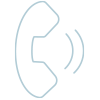Managing patient medication safety is your pharmacy’s most important responsibility.
RxSafety Advisor™ supports your patient safety efforts by checking for potential mistakes during the prescription medication dispensing process. Advanced services and proven technology reinforce your pharmacists' clinical expertise, giving patients and pharmacists alike full confidence in the prescription dispensing process.
Minimize the risk of prescription drug dosing and dispensing errors
When combined with the knowledge and judgment of your pharmacists, RxSafetyAdvisor provides protection against medication dispensing errors at the point of dispense with a notification to the pharmacist.
How RxSafety Advisor works
RxSafety Advisor first examines National Drug Code (NDC) numbers, drug dispensing quantities, and days' supplies. It cross-references this data against absolute minimum and maximum safe prescription dosing, clinical significance scoring and likelihood scoring. It then indicates any potential look-alike/sound-alike (LASA) medication errors. This process minimizes drug dispensing errors at the pharmacy.
Additional medication screening services
Advanced services provide even greater screening benefits, including medication dose screening for pediatric (ages 12 and under) and geriatric (65 years and older) patients.
We offer additional solutions to help ensure patient safety, including real-time pharmaceutical manufacturer medication safety messaging and REMS programs to help ensure pharmacies can dispense select medications.
RxSafety Advisor helps you:
- Reduce risk for medication dosing and dispensing errors.
- Improve patient confidence and safety.
- Enhance pharmacy staff productivity.
- Increase regulatory compliance.
- Minimize pharmacist medication error.
RxSafety Advisor features include:
- Integration with existing pharmacy management systems
- Support for state quality-assurance programs
- Screening for lookalike/sound-alike (LASA) prescription drug pairs

